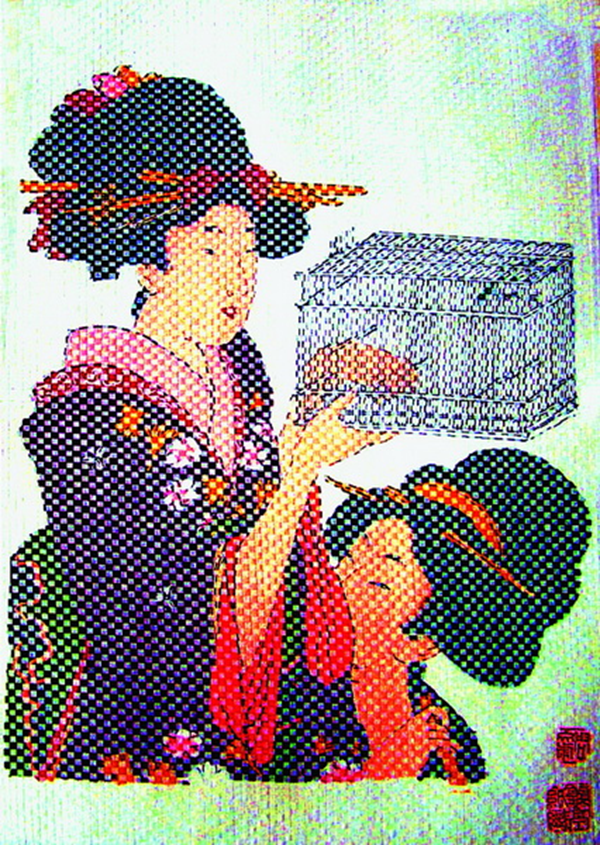
Paper-weaving art in Yongchun county. [Photo/fujian-szwhg.chaoxing.com]
Paper-weaving art is seen mainly in Yongchun county, Quanzhou, Fujian province. It has been recognized as a national intangible cultural heritage item in the traditional fine arts category.
Yongchun county, located in southern Fujian, has a long history of producing bamboo to be used for various utensils. Inspired by folk bamboo weaving, scholars and artists collaborated, leading to the emergence of the precursor to paper-weaving art during the Tang Dynasty (618-907), making it a tradition with a history of 1,300 years.
Paper-weaving art is a flat craft art with highly complex processes involving designing, painting, cutting, weaving, mounting and coloring. It is characterized by a hazy and subtle color palette, emphasizing changes in light and scenery, creating a sense of three-dimensionality. Paper weaving art engages visual perception through optical illusions and overlapping images, encouraging viewers to reinterpret what they see and offering a truly unique artistic experience.
Paper-weaving art gradually developed during the Ming (1368-1644) and Qing (1644-1911) dynasties, reaching its peak during the Qing Dynasty. After that, its production declined, with the number of workshops declining to a mere four. In Yongchun, there are over 10 paper-weaving art clubs, with notable representatives including Zhou Wenhu, Huang Xiuyun and Li Zijie.
Today, paper-weaving art in Yongchun has gained international recognition, being exhibited in over 40 countries and presented as gifts to people from around the world, serving as a symbol of friendship between nations. Yongchun county has been honored as the hometown of paper-weaving art, which has been designated as a folk art protection project.

Copyright © General Office of Fujian Provincial People's Government
Website Identification Code 3500000049Registration Number: 15003084
All rights reserved. The content (including but not limited to text, photo, multimedia information, etc) published in this site belongs to fujian.gov.cn.
Without written authorization from fujian.gov.cn, such content shall not be republished or used in any form.